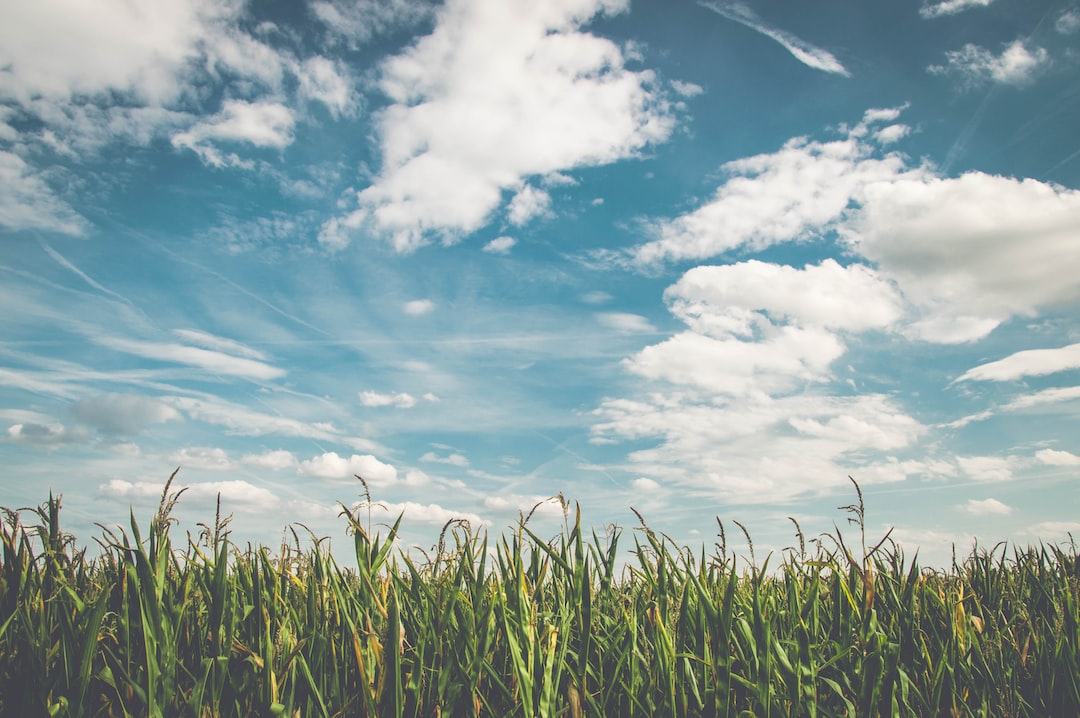Say Goodbye to Zoysia Grass: The Ultimate Guide on How to Remove It

Zoysia grass is a warm-season grass that is known for its invasive nature. It can quickly take over lawns and choke out other grasses and plants. While Zoysia grass has its advantages, it can be a problem for homeowners who want to maintain a diverse and healthy lawn. In this article, we will explore what Zoysia grass is, why it is a problem, and how to effectively remove it from your lawn.
Key Takeaways
- Zoysia grass is a type of invasive grass that can quickly take over lawns and gardens.
- While Zoysia grass has some benefits, such as being drought-resistant and low-maintenance, it can also be difficult to control and remove.
- Signs that Zoysia grass is taking over your lawn include thick, dense patches of grass, yellowing or dying grass in other areas, and difficulty mowing or trimming the grass.
- The best time to remove Zoysia grass is in the late summer or early fall, when the grass is actively growing and can be more easily uprooted.
- Tools and materials you’ll need for Zoysia grass removal include a shovel, a rake, a hoe, and possibly a sod cutter or tiller, as well as new grass seed and fertilizer for reseeding the lawn.
- Techniques for removing Zoysia grass include hand-pulling, digging, tilling, or using a sod cutter, each with its own pros and cons.
- Chemical methods for Zoysia grass removal include using herbicides, but these can be harmful to other plants and the environment, so natural methods like solarization or smothering may be preferred.
- Preparing your lawn for new grass after Zoysia removal involves removing all traces of the old grass, tilling and aerating the soil, and adding new topsoil and fertilizer before reseeding.
- Maintaining a Zoysia-free lawn requires regular mowing, watering, and fertilizing, as well as keeping an eye out for any signs of Zoysia regrowth.
- Frequently asked questions about Zoysia grass removal include how long it takes to remove Zoysia grass, whether it’s possible to save any of the existing grass, and how to prevent Zoysia from coming back in the future.
What is Zoysia Grass and Why is it a Problem?
Zoysia grass is a type of warm-season grass that is native to Asia. It is known for its dense growth habit, which allows it to quickly spread and take over lawns. While this can be desirable for some homeowners who want a low-maintenance lawn, it can also be a problem for those who prefer a diverse and healthy lawn.
One of the main problems with Zoysia grass is its invasive nature. It can quickly spread through underground rhizomes and above-ground stolons, choking out other grasses and plants in the process. This can lead to a monoculture lawn that lacks biodiversity and is more susceptible to pests and diseases.
The Pros and Cons of Zoysia Grass
Like any type of grass, Zoysia grass has its advantages and disadvantages. Some of the advantages of Zoysia grass include its ability to tolerate heat, drought, and heavy foot traffic. It also has a dense growth habit that can help prevent weed growth.
However, there are also disadvantages to Zoysia grass. One of the main disadvantages is its invasive nature, as mentioned earlier. It can quickly take over lawns and be difficult to control. Additionally, Zoysia grass requires regular maintenance, including mowing, watering, and fertilizing.
Signs that Zoysia Grass is Taking Over Your Lawn
| Signs that Zoysia Grass is Taking Over Your Lawn |
|---|
| 1. Thick, dense growth |
| 2. Dark green color |
| 3. Stolons (above-ground runners) spreading rapidly |
| 4. Crowding out other grasses and weeds |
| 5. Slow growth in cooler temperatures |
| 6. Tolerant of drought and heat |
| 7. Requires less fertilizer and water than other grasses |
There are several visual cues that can indicate that Zoysia grass is taking over your lawn. One of the most obvious signs is the presence of thick, dense patches of grass that are different from the rest of your lawn. These patches may be a different color or texture than the surrounding grass.
Another sign of Zoysia grass invasion is the presence of stolons and rhizomes. These are above-ground and underground stems that allow Zoysia grass to spread and take over other areas of your lawn. If you notice these structures in your lawn, it is likely that Zoysia grass is present.
To identify Zoysia grass in your lawn, you can also look at the leaf blades. Zoysia grass has a unique leaf shape, with a pointed tip and a folded appearance. This can help you distinguish it from other types of grasses.
The Best Time to Remove Zoysia Grass
The optimal time to remove Zoysia grass from your lawn depends on several factors. One of the main factors to consider is the growth stage of the grass. Zoysia grass is most actively growing during the summer months, so it may be easier to remove during this time.
Another factor to consider is the weather conditions. It is best to remove Zoysia grass when the soil is moist but not saturated. This will make it easier to remove the grass and its roots without causing damage to the soil.
Additionally, it is important to consider your own schedule and availability. Removing Zoysia grass can be a time-consuming process, so it is best to choose a time when you have enough time and energy to dedicate to the task.
Tools and Materials You’ll Need for Zoysia Grass Removal

To effectively remove Zoysia grass from your lawn, you will need several tools and materials. Some of the necessary tools include a shovel or spade, a rake, a weed trimmer or mower, and a tarp or plastic sheeting.
The shovel or spade will be used to dig up the Zoysia grass and its roots. The rake can be used to remove any debris or dead grass after the removal process. The weed trimmer or mower can be used to cut the Zoysia grass down to a manageable height before removal. The tarp or plastic sheeting can be used to collect and dispose of the removed grass.
Techniques for Removing Zoysia Grass: Pros and Cons
There are several techniques that can be used to remove Zoysia grass from your lawn. Each technique has its pros and cons, so it is important to choose the method that works best for your specific situation.
One of the most common techniques for removing Zoysia grass is manual removal. This involves digging up the grass and its roots using a shovel or spade. Manual removal can be effective, but it can also be time-consuming and labor-intensive.
Another technique for removing Zoysia grass is chemical removal. This involves using herbicides to kill the grass and its roots. Chemical removal can be quicker and easier than manual removal, but it also comes with potential risks to the environment and other plants in your lawn.
Chemical vs. Natural Methods for Zoysia Grass Removal
When it comes to removing Zoysia grass, there are both chemical and natural methods available. Each method has its own pros and cons, so it is important to consider your specific needs and preferences before choosing a method.
Chemical methods for Zoysia grass removal typically involve the use of herbicides. These chemicals are designed to kill the grass and its roots, making it easier to remove. However, chemical methods can be harmful to the environment and other plants in your lawn. They also require careful application and follow-up maintenance.
Natural methods for Zoysia grass removal involve manual techniques such as digging up the grass and its roots. While this method can be time-consuming and labor-intensive, it is generally considered to be safer for the environment and other plants in your lawn. It also does not require the use of chemicals.
Preparing Your Lawn for New Grass After Zoysia Removal
After removing Zoysia grass from your lawn, it is important to prepare the area for new grass growth. This involves several steps, including soil preparation, fertilization, and seeding or sodding.
One of the first steps in preparing your lawn for new grass is to remove any remaining Zoysia grass roots and debris. This can be done by raking the area and removing any visible roots or stolons. It is also important to loosen the soil to a depth of at least six inches to ensure proper root growth.
Once the soil is prepared, it is important to fertilize the area with a high-quality lawn fertilizer. This will provide the necessary nutrients for new grass growth. It is also a good idea to test the soil pH and make any necessary adjustments before planting new grass.
Finally, you can choose to seed or sod the area with new grass. Seeding involves spreading grass seed evenly over the prepared soil and then watering it regularly until it germinates. Sodding involves laying down pre-grown grass rolls or squares onto the prepared soil. Both methods can be effective, but sodding typically provides quicker results.
Maintaining a Zoysia-Free Lawn: Tips and Tricks
Once you have successfully removed Zoysia grass from your lawn and planted new grass, it is important to take steps to prevent its return. Here are some tips and tricks for maintaining a Zoysia-free lawn:
1. Regular mowing: Keep your lawn mowed at the recommended height for your specific type of grass. This will help prevent Zoysia grass from taking hold and spreading.
2. Proper watering: Water your lawn deeply and infrequently to encourage deep root growth. This will help your new grass establish strong roots and compete with any remaining Zoysia grass.
3. Fertilization: Regularly fertilize your lawn with a high-quality lawn fertilizer to provide the necessary nutrients for healthy grass growth. This will help your new grass outcompete any remaining Zoysia grass.
4. Weed control: Keep an eye out for any signs of Zoysia grass or other weeds in your lawn and take immediate action to remove them. This can help prevent the spread of Zoysia grass and maintain a healthy lawn.
Frequently Asked Questions About Zoysia Grass Removal
1. Is it possible to remove Zoysia grass without using chemicals?
Yes, it is possible to remove Zoysia grass without using chemicals. Manual removal techniques, such as digging up the grass and its roots, can be effective in removing Zoysia grass from your lawn.
2. How long does it take to remove Zoysia grass from a lawn?
The time it takes to remove Zoysia grass from a lawn depends on several factors, including the size of the area and the method used for removal. Manual removal can be time-consuming and labor-intensive, while chemical removal can be quicker but may require follow-up maintenance.
3. Will removing Zoysia grass damage my lawn?
Removing Zoysia grass can cause some temporary damage to your lawn, as you will need to dig up the grass and its roots. However, with proper soil preparation and new grass planting, your lawn should recover and thrive.
In conclusion, Zoysia grass can be a problem for homeowners who want to maintain a diverse and healthy lawn. It is known for its invasive nature and ability to quickly take over lawns. However, with the right tools, techniques, and maintenance practices, it is possible to effectively remove Zoysia grass and maintain a Zoysia-free lawn. By following the tips and tricks outlined in this article, you can successfully remove Zoysia grass from your lawn and enjoy a beautiful and healthy lawn.



